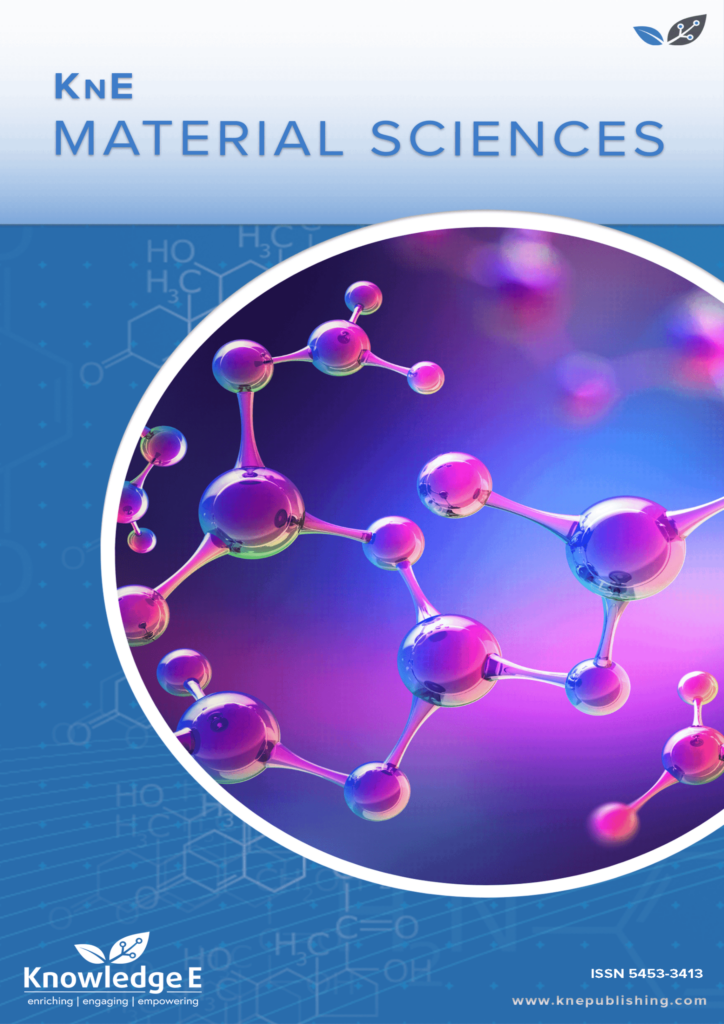
KnE Materials Science
ISSN: 2519-1438
The latest conference proceedings on physical materials, energy materials, electrical materials.
Compression Anastomoses Formation on the Digestive Tract Organs with Using TiNi Devices
Published date: Jul 17 2017
Journal Title: KnE Materials Science
Issue title: Shape Memory Biomaterials and Implants in Medicine (SMBIM)
Pages: 176-183
Authors:
Abstract:
The article contains the results of a study of nickelid titanium devices used for the formation of compression anastomoses in patients with digestive system diseases and describes the techniques of compression fistula formation using these devices. Besides, the article presents clinical experience in the formation of anastomoses between the organs of gastrointestinal tract for the treatment of eighty-seven patients with various pathologies of digestive organs. One hundred and nine compression anastomoses were applied in our clinic. Anastomotic dehiscence was found in three cases (2,7%) which are described in details in the article. In all patients, the devices evacuated from the digestive tract in a natural way. The average period of device rejection accounted for 14 days. Fibrotic scope examination performed after an operation showed that created anastomoses corresponded to the dimensions of used structures. A soft scar by primary healing type was formed on the parts with compression anastomosis. Using nickelid titanium devices for the formation of compression anastomoses between the gastrointestinal organs will improve the quality of fistula formation, reduce mortality and postoperative complications.
References:
[1] O.A. Fatushina, M.M. Solovyov, S.A. Gluchenco, Morphogenesis of seamless compression anastomosis formed from elastic NiTi implant, Siberian messenger Hepatology and Gastroenterology [in Russian]. 12-13 (2001) 207.
[2] P.I. Leimanchenko, V.F. Aliev, S.B. Azizov, A.G. Kritskih, The evolution of research projects of nickelid-titanium devices for creating compressive inter-intestinal anastomoses, Clinical medical journal. 18.1. (2016) 42-47.
[3] J. Kang, M.G.Park, H. Hur, B.S. Min, K.Y. Lee, N.K. Kim, Safety and efficacy of the NiTi shape memory compression anastomosis rin (CAR/ColonRing) for end-to-end compression anastomosis in anterior resection or low anterior resection, Surgical Innovation. 20 (2012) 164-170.
[4] D. Kopelman, O.A. Hatoum, B. Kimmel, L. Monassevitch, Y. Nir, S. Lelcuk, M. Rabau, A. Szold, Compression gastrointestinal anastomosis, Med. Devices, 4 (2007) 821-828.
[5] K. Kusnierz, P. Lampe, Long term results of the use of compression anastomosis clips (CAC) in gastrointestinal surgery the first report, Polski przeglad chirurgiczny. 87 (2015) 295-300.
[6] N.N. Li, W.T. Zhao, X.T. Wu, Сan a nickel-titanium memori-shape divaice serve as a substitute for the stapler in gastrointestinal anastomosis? A systematic review and meta-analysis, Journal of Surgical Research. 201 (2016) 82-93.
[7] I. Nudelman, V. Fuko, N. Waserberg et all, Colonic anastomosis performed with a memory-shaped device, Am J Surg. 190 (2005) 434-38.
[8] M. Zaritzky, R. Den, G. Zylberg, B. Yampolsky, Magnetic compression anastomosis as a nonsurgical treatment for esophageal atresia, Pediatr Radiol. (2009) 945-949.
[9] R. Jamshidi, J.T. Stephenson, J.G. Clay, K.O. Pichakron, M.R. Harrison, Magnamosis: magnetic compression anastomosis with comparison to suture and staple techniques, Journal of Pediatric Surgpery. 44 (2009) 222-228.
[10] Z.W. Jiang, N. Li, J.S. Li et all, Small bowel anastomosis performed with the nickel-titanium temperature-dependent memory-shape device, Zhonghua Wei Chang Wai Ke Za Zhi. 9 (2006) 392-394.
[11] O.N. Tucker, N. Beglaibter, R.J. Rosenthal, Compression anastomosis for Roux-en-Y gastric by-pass: observations in a large animal model, Surg. Obes Relat Dis. 4 (2008) 115-21.
[12] G.Ts. Dambaev, V.E. Gunther, M.M. Solovyov, Е.A. Avdoshina et all, Shape memory implants in surgery. Atlas [in Russian], Tomsk, 2009.
[13] G.Ts. Dambaev, M.M. Solovyov, O.A. Fatushina, E.G. Dambaeva, New methods of formation of compression anastomosis, collection: Biocompatible Materials and Implants with Shape Memory [in Russian], Tomsk, 2001, pp. 54-60.
[14] G.Ts. Dambaev, V.E. Gunther, M.M. Solovyov, A.V. Proskurin, V.R. Latipov, R.F. Patent 2285468. [in Russian] (2005).